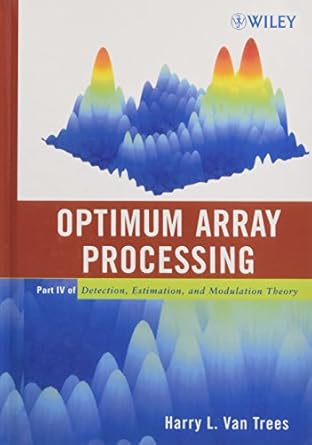Once again, Harry Van Trees has written the definitive textbook and research reference.
-Norman L. Owsley
Office of Naval Research, IPA University of Rhode Island
A comprehensive treatment of optimum array processing
Array processing plays an important role in many diverse application areas, including radar, sonar, communications, seismology, radio astronomy, tomography, and cellular communications.
Optimum Array Processing gives an integrated presentation of classical and statistical array processing. Classical analysis and synthesis techniques for linear and planar arrays are developed. A statistical characterization of space-time random processes is provided. Many different aspects of optimum array processing are covered, including waveform estimation, adaptive beamforming, parameter estimation, and signal detection. Both plane-wave signals and spatially spread signals are studied, and all results are developed in a pedagogically sound manner.
This book provides a fundamental understanding of array processing that is ample preparation for research or implementation of actual array processing systems. It provides a comprehensive synthesis of the array processing literature and includes more than 2,000 references. Readers will find an extensive variety of models and criteria for study and comparison, realistic examples and practical applications of optimum algorithms, challenging problems that expand the book's material, and detailed derivations of important results. A supplemental Web site is available that contains MATLAB(r) scripts for most of the figures used in the book so readers can explore diverse scenarios.
The book uses results from Parts I and III of Detection, Estimation, and Modulation Theory. These two books have been reprinted in paperback for availability.
For students in signal processing or professionals looking for thorough understanding of array processing theory, Optimum Array Processing provides authoritative, comprehensive coverage in the same clear manner as the earlier parts of Detection, Estimation, and Modulation Theory.



 Wow! eBook
Wow! eBook